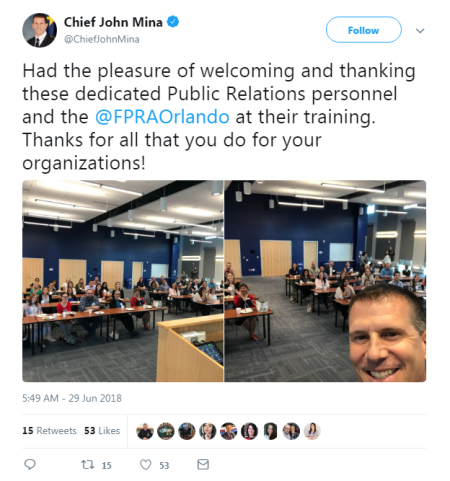Video content reigns on nearly every online platform. The good news is you don’t have to be the next Spielberg to make a great piece of video content for your website or social channels.
Regardless of the equipment you use, here are a few tips that will help elevate the look, feel and production value of your video.
1. Shoot with mobile in mind.
According to eMarketer, 1.87 billion people will use a mobile phone to watch digital video in 2018 – an 11.9 percent increase from 2017. With this data in mind, be sure to develop your videos for smaller screens. For example, consider positioning your subject closer to the camera than you normally might, so the audience can easily read their facial expressions even when viewing on a mobile device.
2. Capture clear audio.
If you’re shooting a video with your phone, there are simple steps you can take to improve audio quality. When using a phone’s built-in microphone, your subject may sound like they are talking into a tin can. Using a microphone that can be plugged directly into your phone makes a big difference for a small cost.
If your video will be posted to social media and audio is integral to the story, be sure to include captions. When most videos autoplay, the audio is muted. Facebook can autogenerate captions, or you can add your own.
If you find Facebook’s caption editor to be a little tricky to use, I recommend using YouTube’s caption editor, as it’s a little more user-friendly. Once you’re finished creating the captions, you can download the “.srt” caption file and add it to your Facebook video.
3. Get creative with different angles.
Try filming your subject and other b-roll footage from different angles. From a lower “ant’s-eye view” to the more distant “bird’s-eye view,” different angles offer variety and keep your video interesting.
4. Pose your subject.
Properly posing your subject is key. When a subject has their shoulders square to the camera, it causes the video to lack depth – especially if they’re in front of a flat backdrop. Instead, turn their feet slightly away from the camera so their shoulders are at an angle. Be sure to consider the rule of thirds when positioning your subject as well.
5. Go toward the light! (But not too close.)
Lighting is another crucial component to create a polished video. And guess what? You don’t always need a lighting kit. If shooting outside, try to shoot right around daybreak or sunset – the time of day known as “the golden hour” – when light and shadows aren’t as harsh. If you can’t change the time of your shoot, position your subject in the shade or, if indoors, position them near natural light from a window. Just make sure your subject is evenly lit and not sitting too close to the light, otherwise they may look washed out.
We’d like to give a shoutout to Karen, one of our communications specialists, for being our model in these photos and videos. Clearly, she did not have any fun.








 Posted by TheStrategicFirm
Posted by TheStrategicFirm 
























